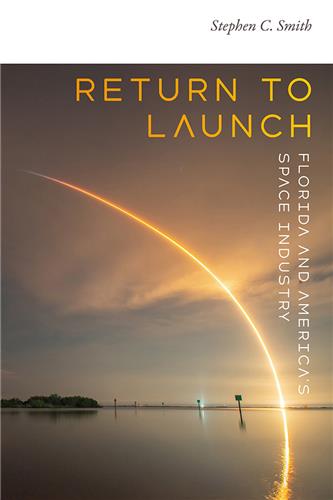This book provides discussion and case studies of ethical best practices for the discipline of forensic anthropology, encouraging readers to think critically about professionalism in the discipline, how to recognize ethical challenges, and how to conduct themselves when confronted with them.
University of Florida Press
Please note that while you may order forthcoming books at any time, they will not be available for shipment until shortly before publication date
This book tells the story of how Cape Canaveral’s “second space age” reshaped the trajectory of the US space program and helped usher in a new era of spaceflight in the twenty-first century.
Offering a fresh perspective on the Latin American climate crisis through the lens of natural history and its institutions, this volume shows how writers, artists, and curators are rethinking approaches to the discipline that cast humans and nature as separate entities.
This volume offers new insights into revolutionary Cuba’s global influence by shifting the focus from high-level political leaders to overlooked dimensions such as everyday lives, family dynamics, and notions of gender and sexuality.
This volume explores Latin American cultural works from the twentieth and twenty-first centuries that reflect environmental changes, showcasing how artists, writers, and activists depict the scale and impact of ecological crises.
Exploring the relationships between plants, animals, and humans across various countries and historical periods and through a wide range of cultural production, this collection challenges anthropocentric perspectives and offers a deeper understanding of Latin America’s natural environment.
An important resource for anyone involved in managing waterfront property in Florida, this book explains the concept of living shorelines—nature-based coastal infrastructure and landscaping—and how to implement ecologically-informed shoreline protection in the state.
This book examines the evolution of queer Dominican literary and cultural production from the 1950s to the present, tracing how same-sex desire and gender nonconformity have been negotiated both tacitly and overtly across this time period.
Mission is 14th NASA administrator and US Senator Bill Nelson’s account of his journey on the Space Shuttle Columbia in 1986, featuring Nelson’s early perspectives on the US space program and offering a window into a fascinating time in space history.
Kreyòl pale (Creole is Spoken) is a 29-chapter textbook designed for beginner learners of the Haitian Creole language. The textbook employs a communicative pedagogical methodology that emphasizes the learner’s acquisition of speaking, reading, writing, and listening skills through meaningful content. The textbook focuses on communication scenarios that are the most important for navigating daily life in Haiti and its Diaspora.
Kreyòl pale is built on contemporary teaching methodologies that place Haitian Creole communicativeness at the center of the learner’s experience. Kreyòl pale is an essential beginners’ Haitian Creole textbook due to the meaningfulness, practicality, and relatability of its Haitian Creole materials. As an introduction to Haitian Creole language and culture, this textbook opens the way to the many paths to mastery.











